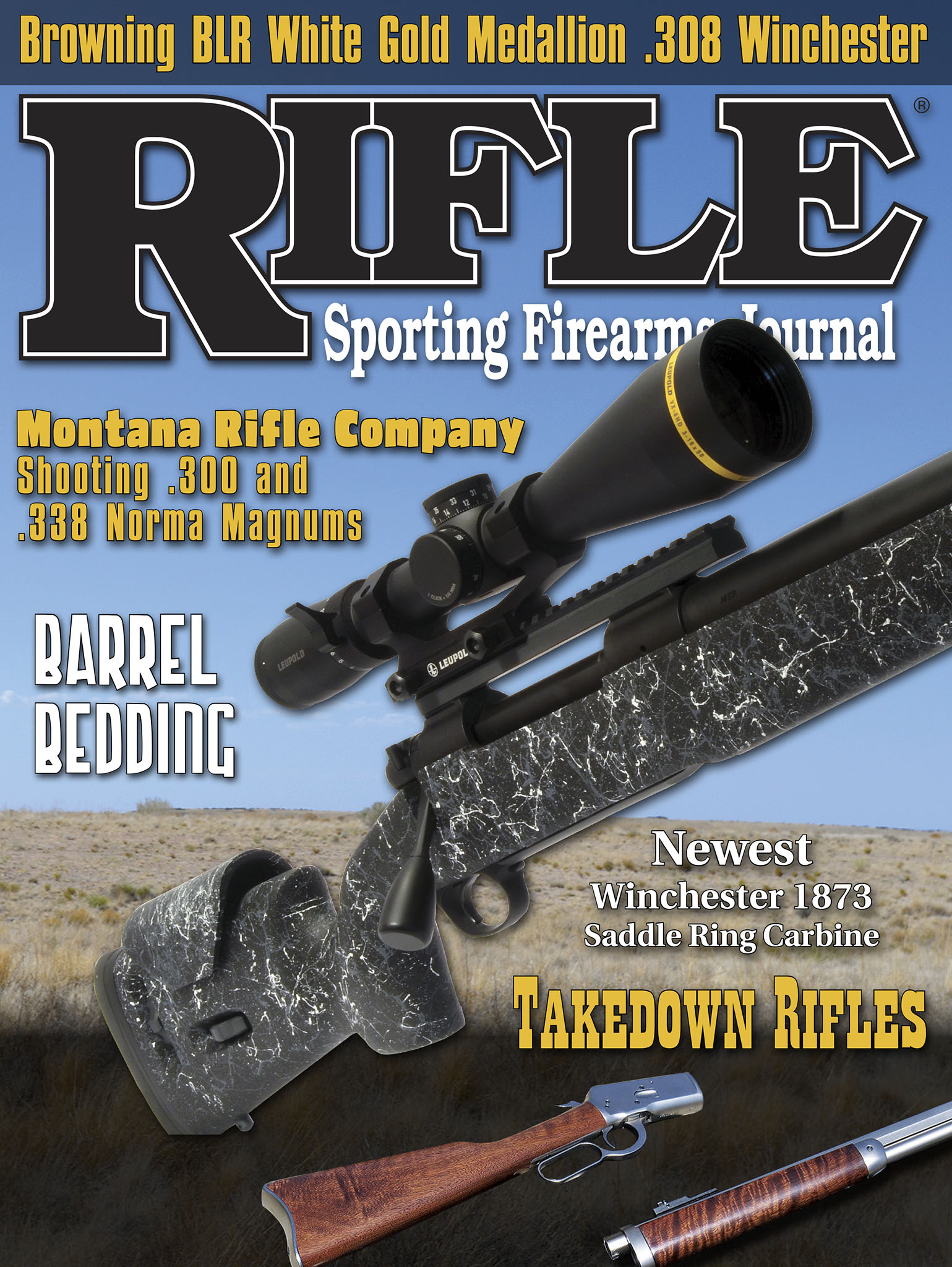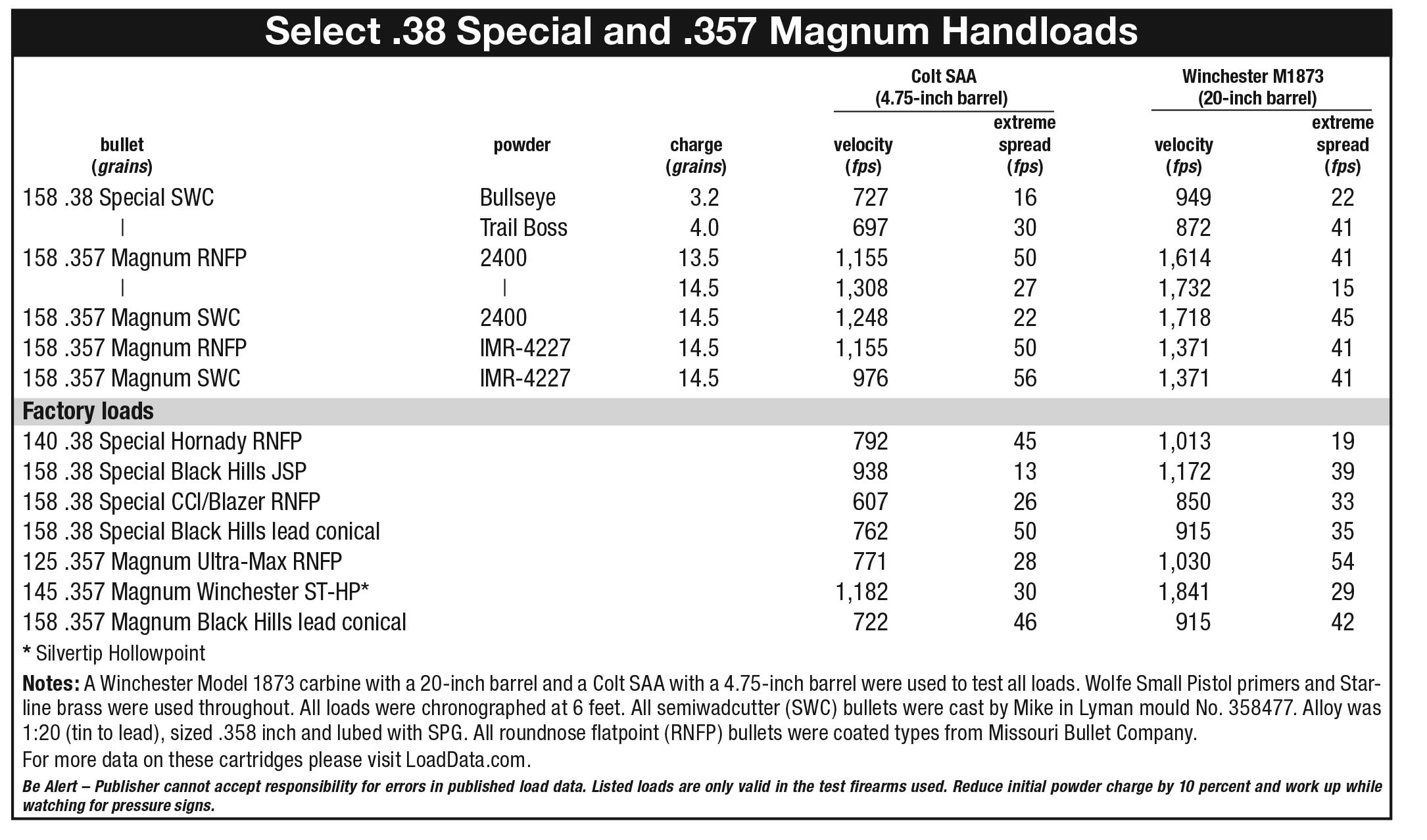Winchester Model 1873
Shooting the Latest Saddle Ring Carbine
feature By: Mike Venturino Photos by Yvonne Venturino | September, 18
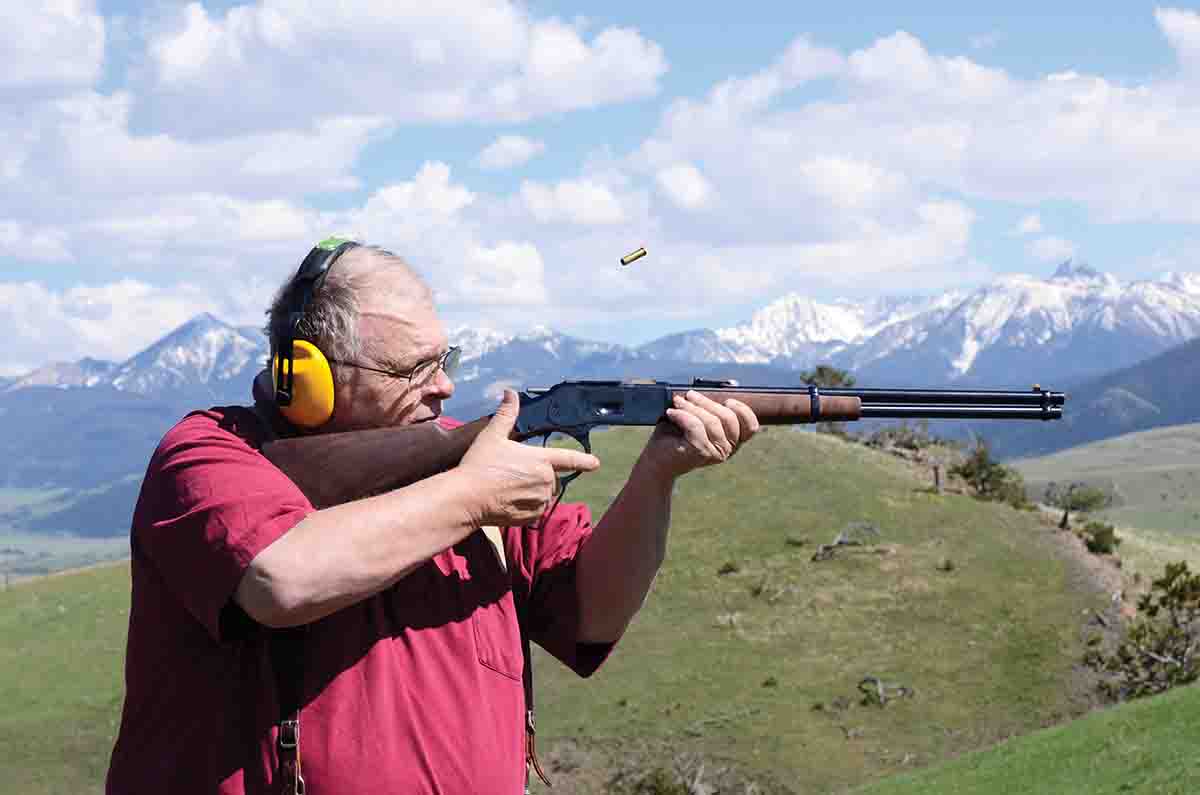
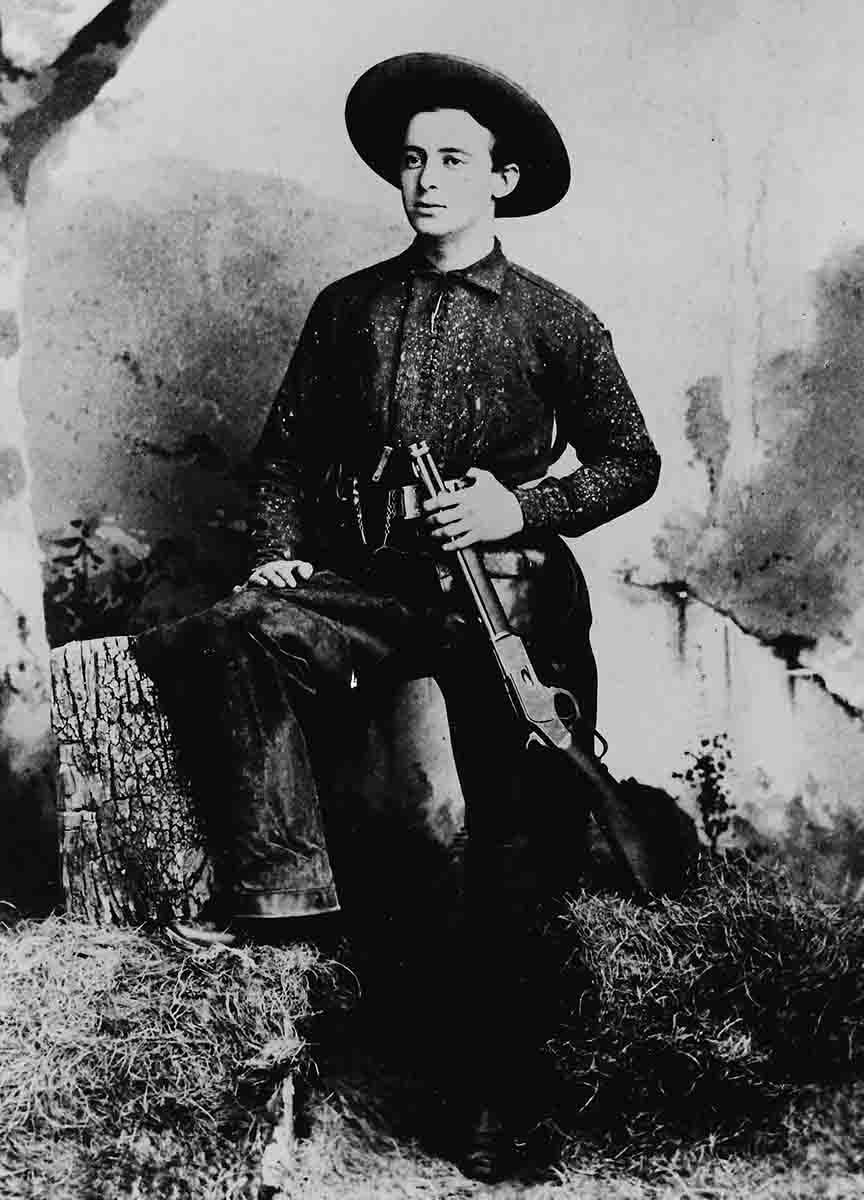
What exactly constitutes a saddle ring carbine? My desk dictionary defines carbine as “a short, light rifle.” Winchester Repeating Arms put its own definitions on rifles and carbines. Rifles had deeply curved, crescent buttplates. SRC buttplates had much shallower curves and were wider to boot. Rifles had steel forend caps. SRCs had steel barrel bands to secure forearms. Rifles had buckhorn-type rear sights adjustable for elevation in 50-yard increments using notched sliders. SRCs had ladder-type rear sights on which sight bars could slide up for increased elevation. Front sights on rifles were blade types dovetailed to barrels. For SRCs, studs were brazed to barrels into which blades were set. Windage could be zeroed on rifles by drifting the front sight or rear sight, or both, laterally in their dovetails. Only the rear sight on SRCs could be drifted.
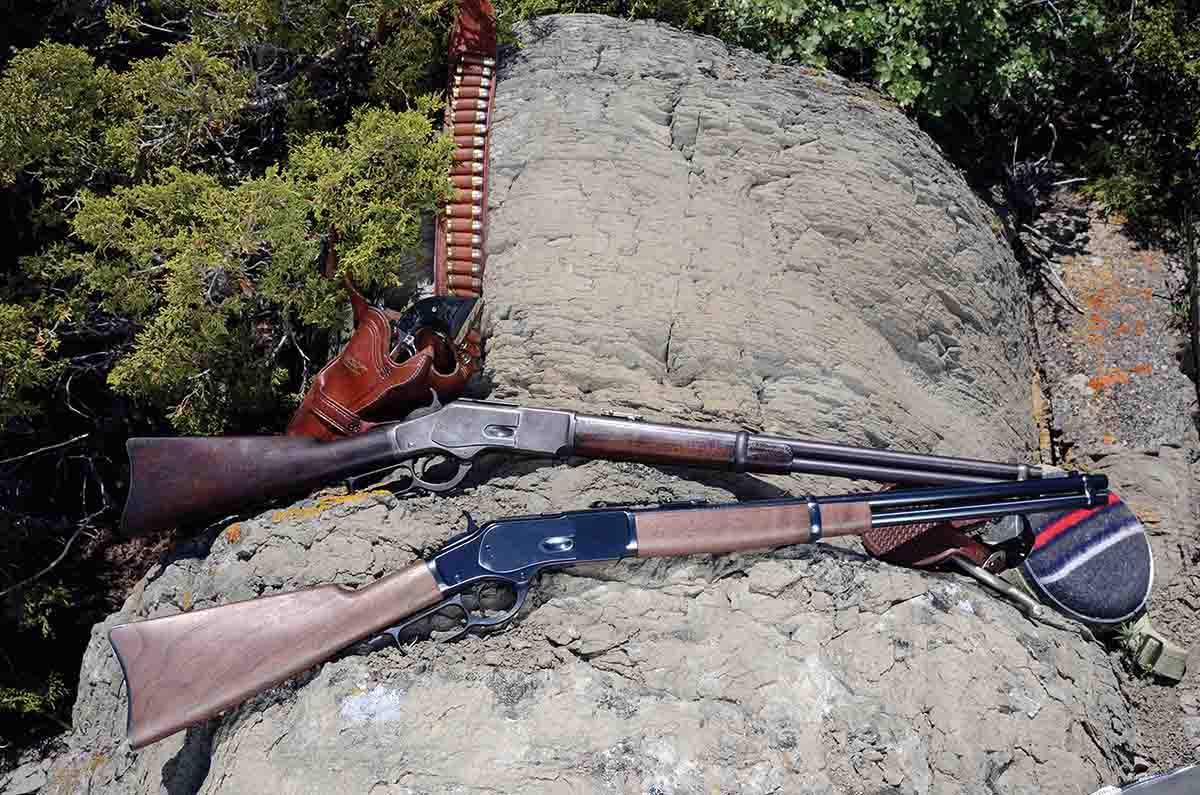
Rifles were chambered for .44 WCF (.44-40), .38 WCF (.38-40), .32 WCF (.32-20) and both .22 Short and Long rimfires. SRCs were not made as .22s. Both rifle and carbine steel buttplates had trapdoors for storing jointed cleaning rods, but only in .38 and .44 caliber. Winchester rated a standard round-barrel rifle at 8.75 pounds, an octagonal-barreled rifle at 9 pounds and a standard SRC at 7.25 pounds.
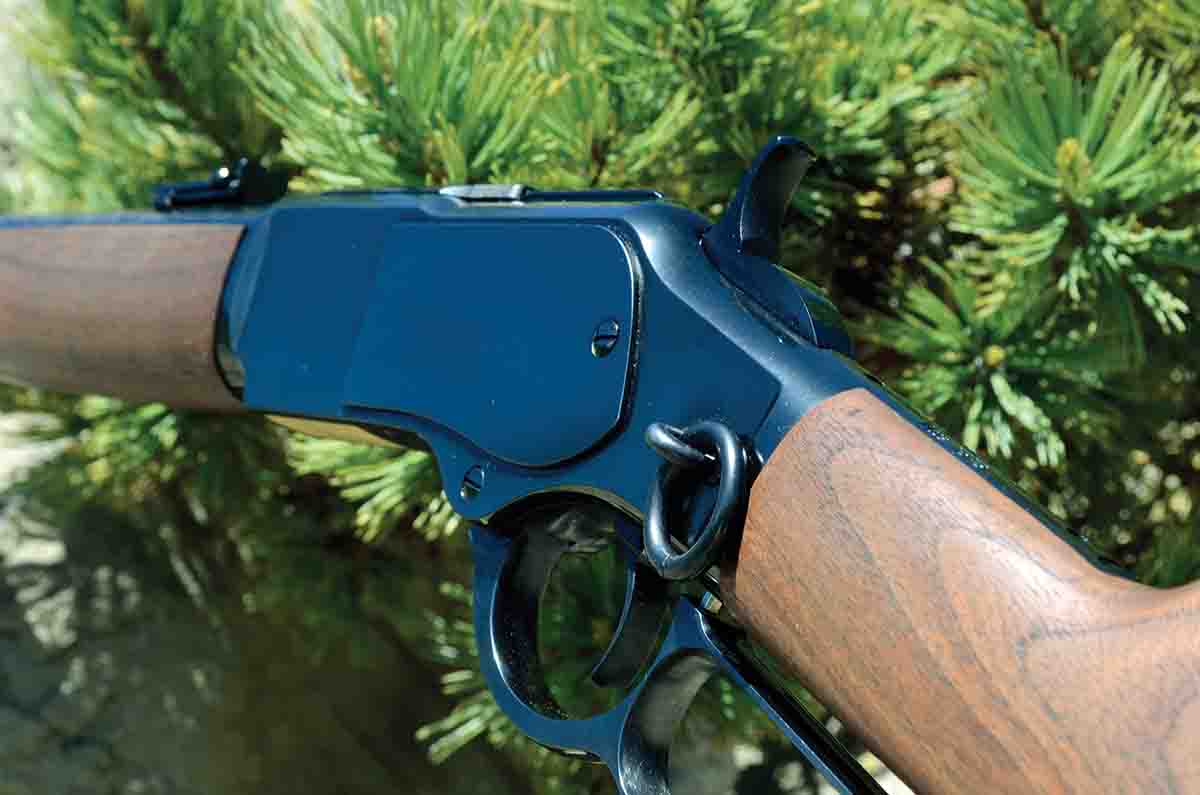
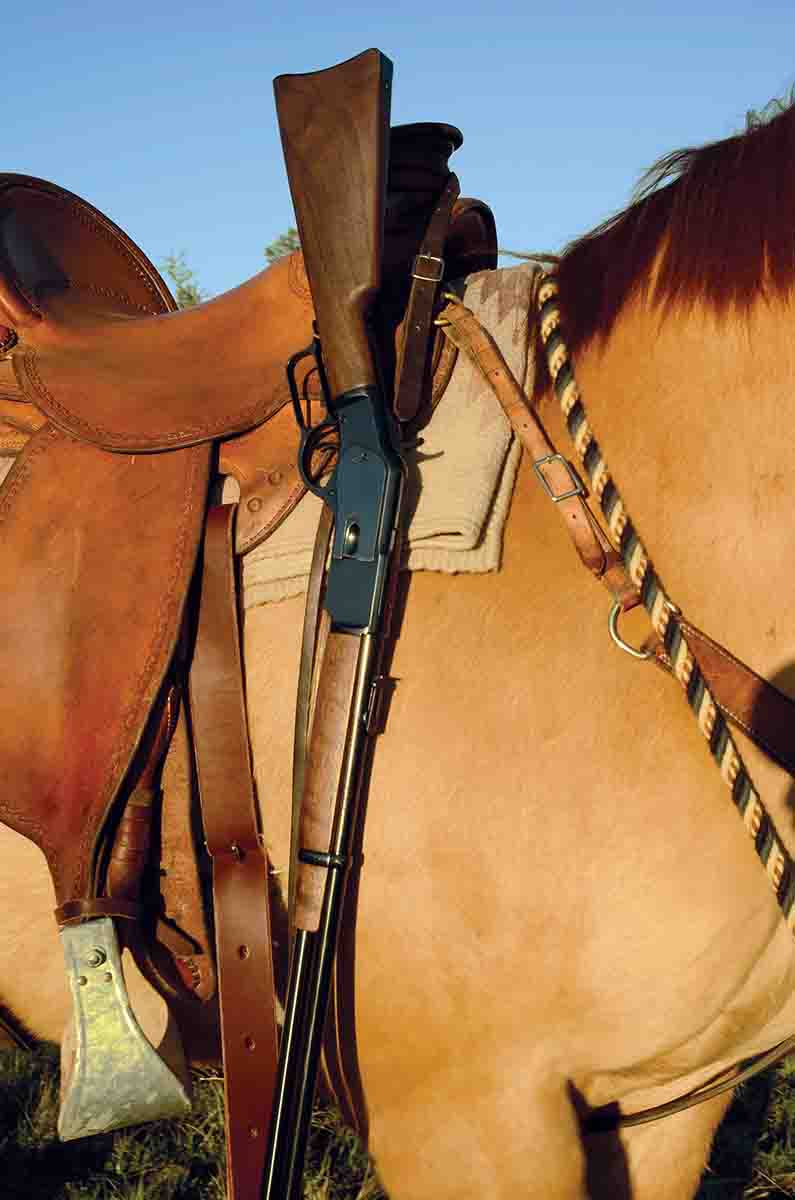
Now, if Winchester’s determination of whether one of its leverguns was a rifle or carbine was not confusing enough, consider that the company would sell longer or shorter-than-normal barrel lengths. One of the most common deviations from standard was a rifle with all the features, but it had a 20-inch barrel – the same as carbines. However, the barrel was not a lightweight as used on SRCs. They were the same diameter as barrels sold on rifles. Winchester called these Short Rifles.
Now fast-forward 90 years from when Winchester officially dropped the Model 1873. That summer I attended a firearms industry get-together, and one of the guns being fired was a Browning-Japanese (Miroku) manufactured Model 1873 .38 Special/.357 Magnum. It was in Short Rifle configuration with a 20-inch, round barrel. I was only able to fire 10 rounds through it and thought it was a nicely made replica, as all the Miroku leverguns have been. Furthermore, this one lacked any sort of lawyer-dictated external safety. These have been the chief criticism thrown at Miroku/Browning/Winchester leverguns over the years.
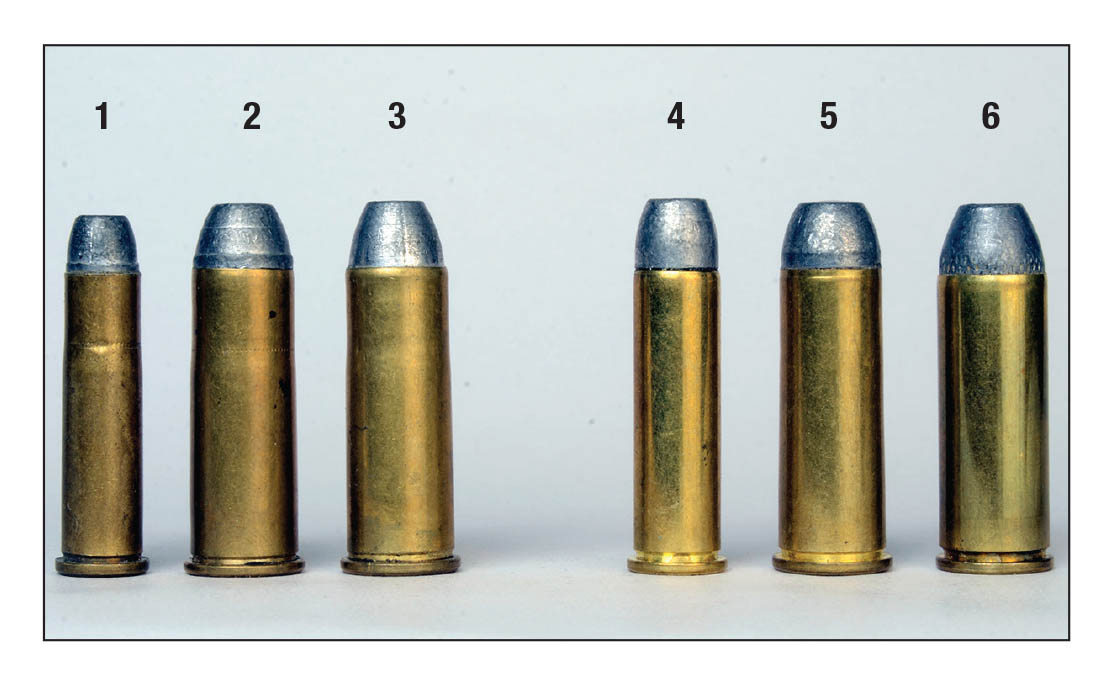
Four busy years passed until my interests returned to these new Model 1873s that are actually stamped “Winchester.” I was pleased to see that .44-40 had been added as a cartridge option. Besides Short Rifles with 20-inch, round barrels, there were now octagonal barrels, others with pistol-grip stocks, and some options included very fine color casehardening of the action, buttplate and forend cap. Checkering was also offered on some versions, and .45 Colt was an option in all versions. I asked Browning to loan me a Model 1873 .44 as quickly as possible in any form available; it turned out to be a Short Rifle. It was covered in Rifle No. 295 (November 2017).
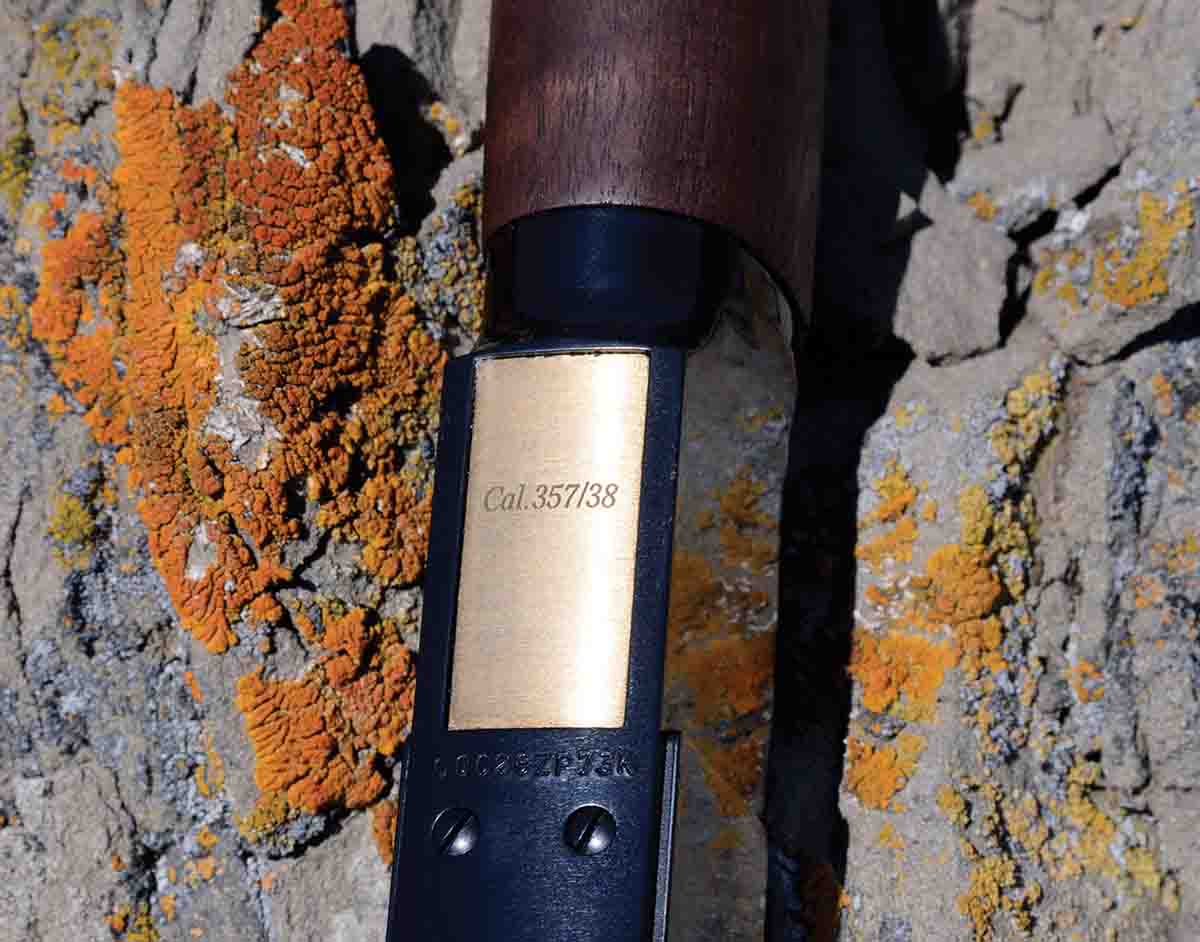
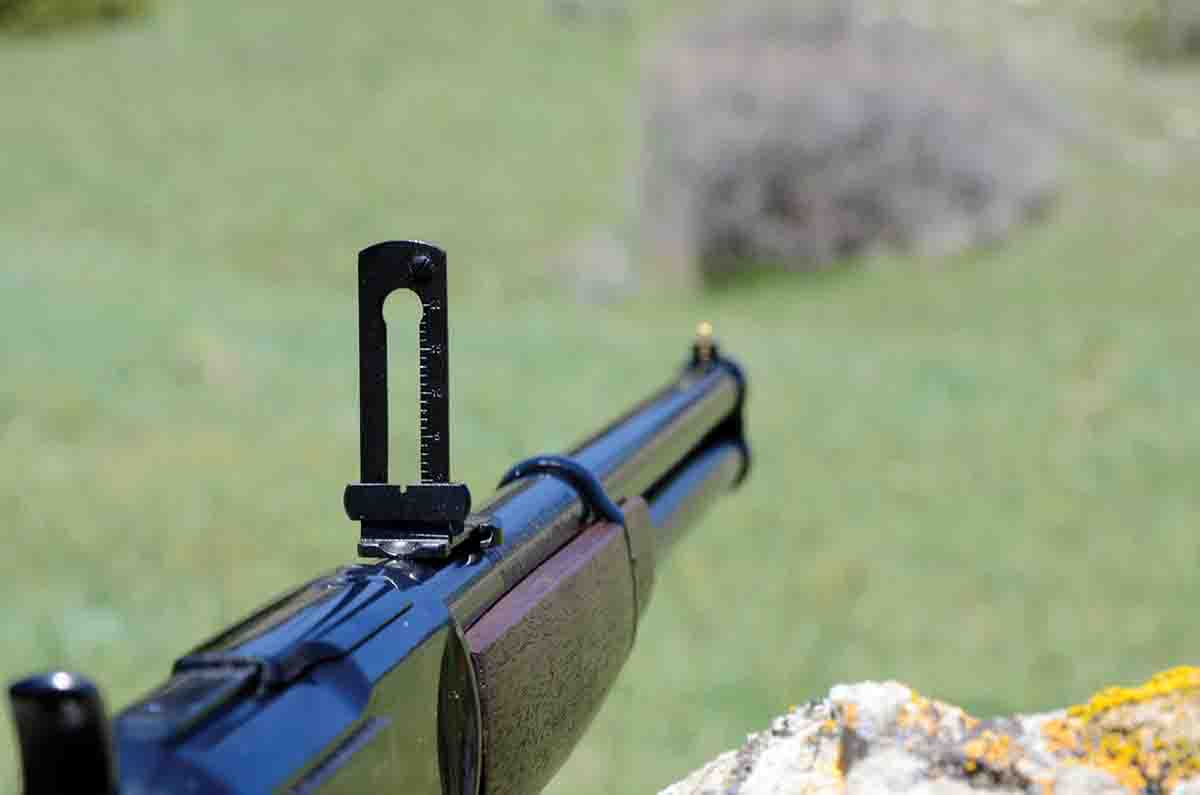
What pleased me so much about this new Winchester SRC .38/.357 is that it is a straight-shooting, smoothly functioning “light rifle” that is very easy to hit with. Except for one cartridge, where the extractor slipped over an empty .38’s rim, leaving it chambered, it functioned just as well with .38 Special rounds as .357 Magnums. The .38 Long Colt can safely be fired in .38 Special and .357 Magnum revolvers, and it’s actually safe to fire in this new ’73, but forget about the .38 Long Colt functioning. Cartridge case heads are pushed from the magazine tube into a brass cartridge lifter, tying up matters until the cartridge is fished out of the loading gate.
Here are some particulars of the new Winchester SRC ’73: Overall length is 38.5 inches with a 20-inch, round barrel, and weight is 7.25 pounds. Those dimensions are identical with my original SRC .44. Its barrel diameter at the muzzle is .635 inch, and the original’s is .650 inch. Length of pull is 12.75 inches on both carbines. Wood-to-metal fit is good but not outstanding. Conversely, the metal fit, polish and deep blue finish are outstanding. As befits an SRC, the stock wood is straight grain, oiled, American walnut. The buttplate on this new SRC is noticeably narrower than my original’s. It is 1.25 inches wide compared to 1.45 inches for the 120-year-old sample.
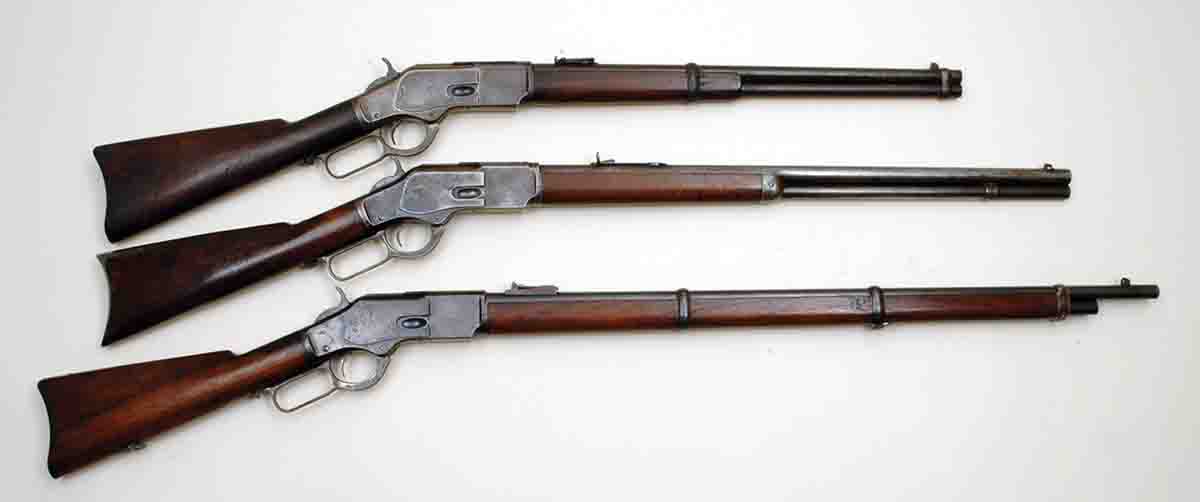
One place where the new gun outperforms the old one is smoothness. Right out of the box, it feels like it has been slicked up by a professional gunsmith. (My original ’73 .44 SRC dates to the 1890s and is considerably rougher internally – perhaps from being out in the weather.) Trigger pull averaged 4.75 pounds and was perfectly crisp.
Magazine capacity is 10 rounds of .357 Magnum or .38 Special. I was able to cram 11 .38s into the magazine, but that jammed up the tube with a cartridge head sitting too far back.
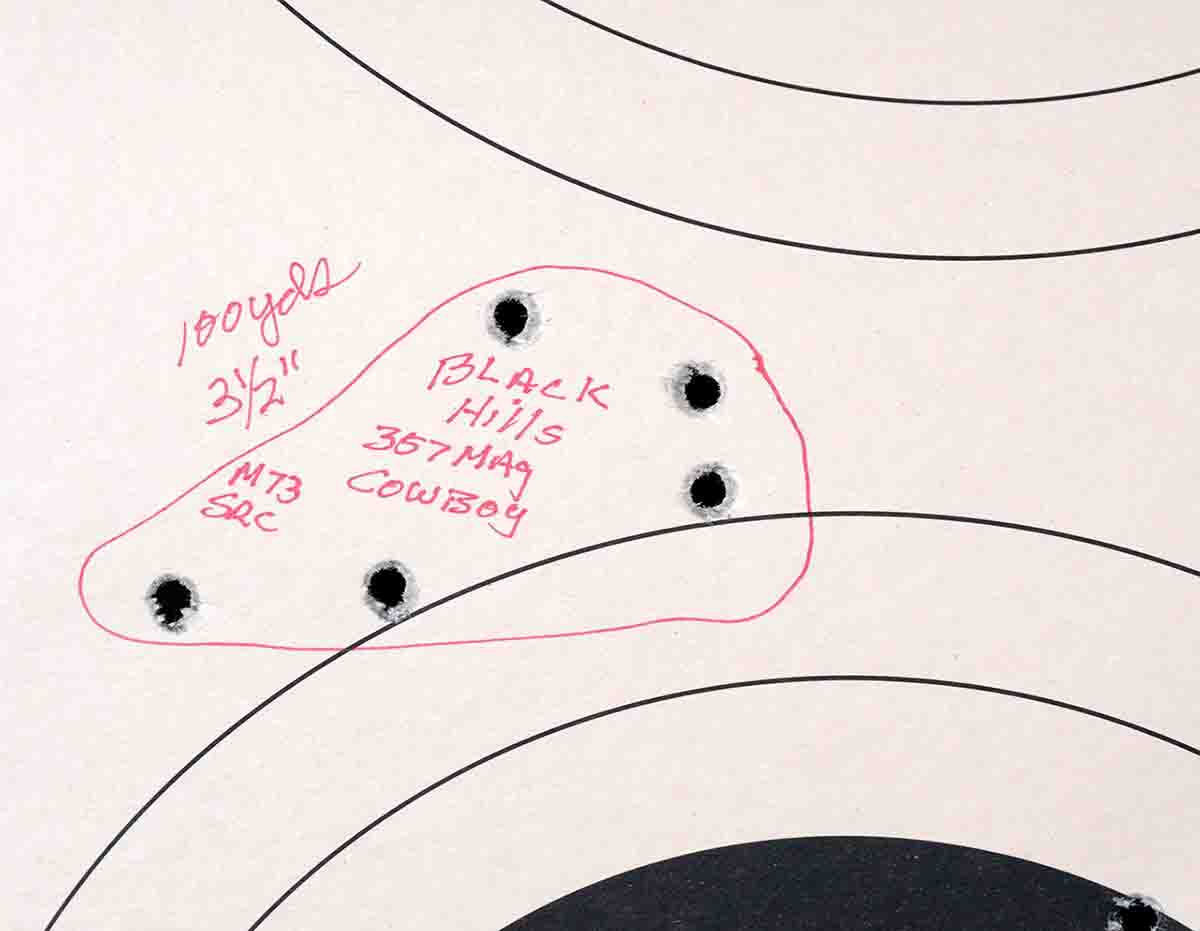
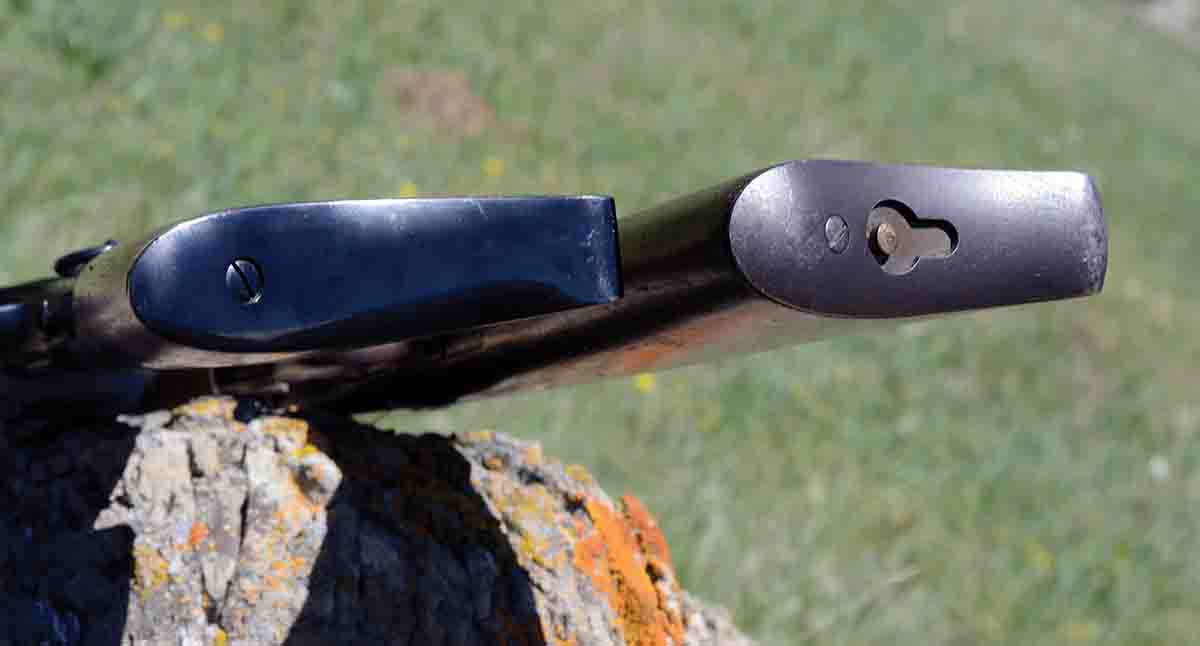
Quite often, SWC bullets are warned against use in leverguns because their sharp shoulders hang up on chamber edges as they are lifted from the magazine. Not so with this ’73 replica. Brass cartridge lifters on ’73s raise a cartridge in line with the chamber, and then the bolt shoves it straight in as the lever is closed. I shot SWC, RN, RNFP and JHP bullets from the sample SRC ’73 without a bobble.
As to shooting groups, I freely admit that these days I have some difficulty with open sights. That said, I still shot some pretty decent groups with both .38 Special and .357 Magnum factory loads and handloads. Decent is defined here as about 3.5 to 4 inches at 100 yards. There were also a few larger groups. Some lead-alloy bullet loads shot well and others did not. For instance, Hornady’s .38 Special 140-grain Cowboy load shot well. CCI’s Trailblazer 158-grain .38 Special Cowboy load did not. Black Hill’s 158-grain .357 Magnum Cowboy load shot nicely, but handloaded 158-grain SWCs over 14.5 grains of 2400 grouped at about a foot.
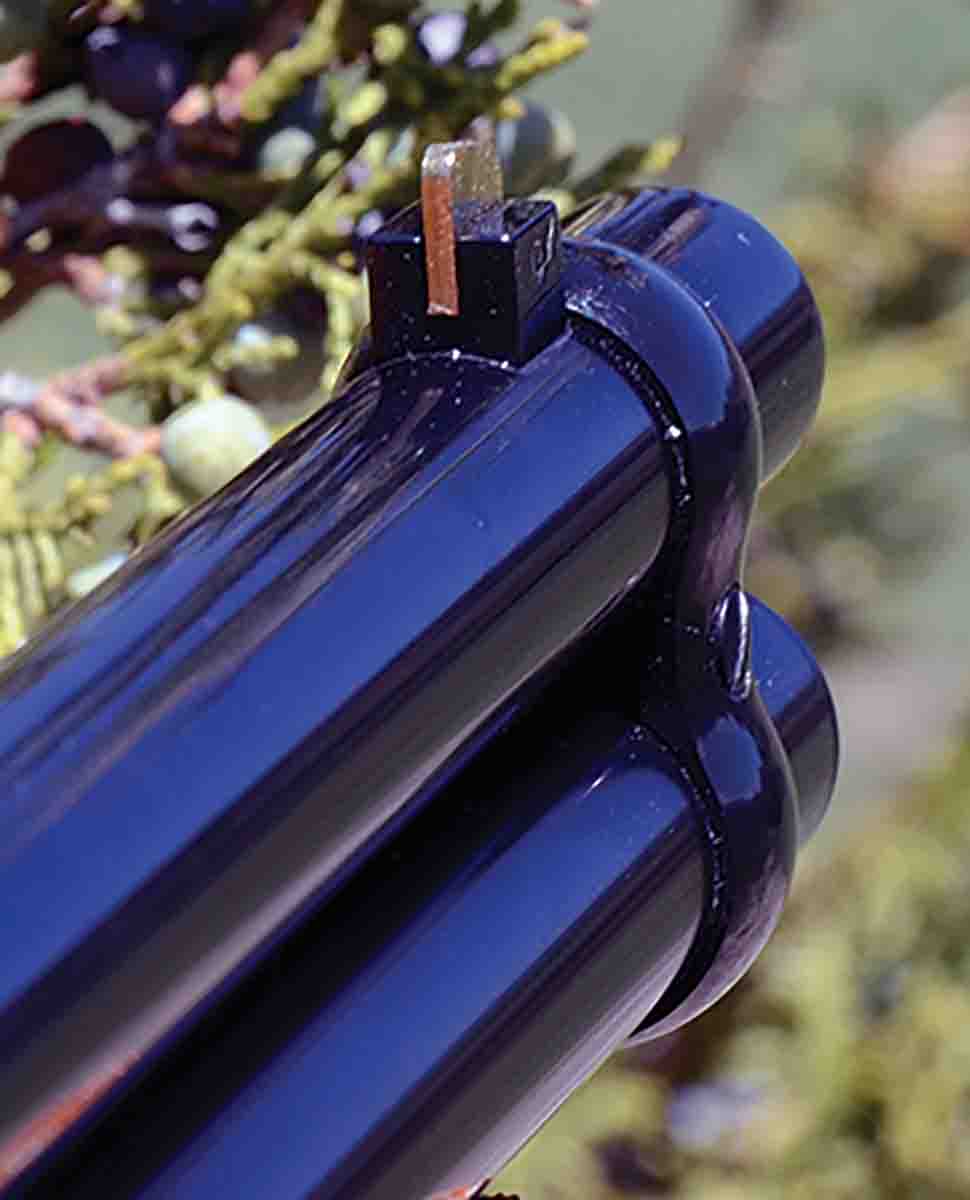
Browning will likely sell plenty of these carbines to cowboy action shooters, and I do not doubt it will also sell them to historically minded folks for use in hunting deer or varmint control. If a .357 Magnum revolver is adequate for deer hunting, certainly a .357 Magnum SRC would be fine out to 100 yards or so.


